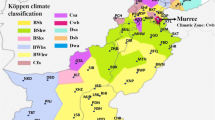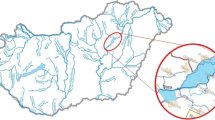Abstract
The objectives of this study were to determine levels of heavy metal in the feathers and blood of Black-tailed gulls (Larus crassirostris), to evaluate metallothionein (MT) mRNA level in Black-tailed gulls on three independent islets, and to examine the correlation between heavy metal concentrations and MT mRNA expression. Eleven heavy metals (Al, Cd, Mn, Pb, Cr, Fe, Cu, Zn, Se, Hg, and As) were investigated in blood and feathers of 65 chicks from breeding colonies (Seomando, Hongdo, and Dokdo islet) of South Korea in 2010. Heavy metals were assayed by PerkinElmer NexION 300 inductively coupled plasma mass spectrometry. The mean concentrations of non-essential heavy metals were found to blood containing Cd (0.002 ~ 0.02 ppm), Pb (0.06 ~ 0.18) ppm, Hg (0.03 ~ 0.05) ppm, and As (0.26 ~ 0.48 ppm), and feather containing Cd (0.05 ~ 0.30 ppm), Pb (2.47 ~ 10.80 ppm), Hg (1.18 ~ 1.57 ppm), and As (0.15 ~ 0.44 ppm). Chicks on Seomando islet showed the highest levels of metals (Cd, Pb, Mn, Cr, Cu, and Se in blood; Al, As, Mn, Cr, Fe, Cu, and Se in feathers) among the colonies. Concentrations of Pb and Hg in feathers were the highest on Hongdo, and the levels of Cd and Zn in feathers were the highest on Dokdo islet. MT mRNA in the blood of Black-tailed gulls was relatively higher in gulls from Seomando than in gulls from Hongdo and Dokdo islet. MT mRNA level is thus positively correlated to heavy metal concentrations in Black-tailed gulls.



Similar content being viewed by others
References
Abdennadher, A., Ramirez, F., Romdhane, M. S., Ruiz, X., Jover, L., & Sanpera, C. (2010). Biomonitoring of coastal areas in Tunisia: stable isotope and trace element analysis in the Yellow-legged Gull. Marine Pollution Bulletin, 60(3), 440–447.
Agusa, T., Matsumoto, T., Ikemoto, T., Anan, Y., Kubota, R., Yasunaga, G., et al. (2005). Body distribution of trace elements in black-tailed gulls from Rishiri Island, Japan: age-dependent accumulation and transfer to feathers and eggs. Environmental Toxicology and Chemistry, 24(9), 2107–2120.
Alhashemi, A. S. H., Karbassi, A. R., Kiabi, B. H., Monavari, S. M., Nabavi, S. M. B., & Sekhavatjou, M. S. (2011). Bioaccumulation of trace elements in trophic levels of wetland plants and waterfowl birds. Biological Trace Element Research, 142(3), 500–516.
Barbieri, E., Passos, E. D., Filippini, A., dos Santos, I. S., & Garcia, C. A. B. (2010). Assessment of trace metal concentration in feathers of seabird (Larus dominicanus) sampled in the Florianopolis, SC, Brazilian coast. Environmental Monitoring and Assessment, 169(1–4), 631–638.
Bearhop, S., Ruxton, G. D., & Furness, R. W. (2000a). Dynamics of mercury in blood and feathers of great skuas. Environmental Toxicology and Chemistry, 19(6), 1638–1643.
Bearhop, S., Waldron, S., Thompson, D., & Furness, R. (2000b). Bioamplification of mercury in great skua Catharacta skua chicks: The influence of trophic status as determined by stable isotope signatures of blood and feathers. Marine Pollution Bulletin, 40(2), 181–185.
Bond, A. L., & Lavers, J. L. (2011). Trace element concentrations in feathers of flesh-footed shearwaters (Puffinus carneipes) from across their breeding range. Archives of Environmental Contamination and Toxicology, 61(2), 318–326.
Brait, C. H. H., & Antoniosi, N. R. (2011). Use of feathers of feral pigeons (Columba livia) as a technique for metal quantification and environmental monitoring. Environmental Monitoring and Assessment, 179(1–4), 457–467.
Brodsky, L. I., Drachev, A. L., Leontovich, A. M., & Feranchuk, S. I. (1993). A novel method of multiple alignment of biopolymer sequences. Biosystems, 30, 65–79.
Burger, J. (1993). Metals in avian feathers: bioindicators of environmental pollution. Reviewed in Environmental toxicology, 5, 203–311.
Burger, J., & Gochfeld, M. (2000). Effects of lead on birds (Laridae): A review of laboratory and field studies. Journal of Toxicology and Environmental Health-Part B-Critical Reviews, 3(2), 59–78.
Burger, J., & Gochfeld, M. (2001). Metal levels in feathers of cormorants, flamingos and gulls from the Coast of Namibia in Southern Africa. Environmental Monitoring and Assessment, 69(2), 195–203.
Burger, J., & Gochfeld, M. (2005). Effects of lead on learning in herring gulls: an avian wildlife model for neurobehavioral deficits. Neurotoxicology, 26(4), 615–624.
Capdevielle, M. C., Hart, L. E., Goff, J., & Scanes, C. G. (1998). Aluminum and acid effects on calcium and phosphorus metabolism in young growing chickens (Gallus gallus domesticus) and mallard ducks (Anas platyrhynchos). Archeives of environmental contamination and toxicology, 35(1), 82–88.
Cui, B. S., Zhang, Q. J., Zhang, K. J., Liu, X. H., & Zhang, H. G. (2011). Analyzing trophic transfer of heavy metals for food webs in the newly-formed wetlands of the Yellow River Delta, China. Environmental Pollution, 159(5), 1297–1306.
Eeva, T., & Lehikoinen, E. (1996). Growth and mortality of nestling great tits (Parus major) and pied flycatchers (Ficedula hypoleuca) in a heavy metal pollution gradient. Oecologia, 108(4), 631–639.
Eeva, T., Belskii, E., & Kuranov, B. (2006). Environmental pollution affects genetic diversity in wild bird populations. Mutation Research-Genetic Toxicology and Environmental Mutagenesis, 608(1), 8–15.
Elliott, J. E., & Scheuhammer, A. M. (1997). Heavy metal and metallothionein concentrations in seabirds from the Pacific coast of Canada. Marine Pollution Bulletin, 34(10), 794–801.
Elliott, J. E., Scheuhammer, A. M., Leighton, F. A., & Pearce, P. A. (1992). Heavy metal and metallothionein concentrations in Atlantic Canadian seabirds. Archives of Environmental Contamination and Toxicology, 22(1), 63–73.
Fernando, L. P., Wei, D. Y., & Andrews, G. K. (1989). Structure and expression of chicken metallothionein. Journal of nutrition, 119(2), 309–318.
Furness, R. W. (1993). Birds as monitors of pollutants. In R. Furness & J. J. D. Greenwood (Eds.), Birds as monitors of environmental change (pp. 86–143). Cornwall: Chapman & Hall.
Furness, R. W., & Greenwood, J. J. D. (1993). Birds as monitors of environmental change. London: Chapman & Hall.
Garcá-Fernández, A. J., Sanchez-Garcia, J. A., Gomez-Zapata, M., & Luna, A. (1995). Distribution of cadmium in blood and tissues of wild birds. Archeives of environmental contamination and toxicology, 30(2), 252–258.
Janssens, E., Dauwe, T., Van Duyse, E., Beernaert, J., Pinxten, R., & Eens, M. (2003). Effects of heavy metal exposure on aggressive behavior in a small territorial songbird. Archives of Environmental Contamination and Toxicology, 45(1), 121–127.
Kim, J., & Koo, T. H. (2008). Heavy metal concentrations in feathers of Korean shorebirds. Archives of Environmental Contamination and Toxicology, 55(1), 122–128.
Kim, C.-H., Kwon, Y.-S., Kang, J. H., & Yoo, J. C. (2007). Avifauna of Dokdo Island. Korean Journal of Ornithology, 14(2), 113–125.
Kim, J., Shin, J. R., & Koo, T. H. (2009). Heavy Metal Distribution in Some Wild Birds from Korea. Archives of Environmental Contamination and Toxicology, 56(2), 317–324.
Klaassen, C. D., Liu, J., & Choudhuri, S. (1999). Metallothionein: An intracellular protein to protect against cadmium toxicity. Annual Review of Pharmacology and Toxicology, 39, 267–294.
Kwon, Y. S., & Yoo, J. C. (2007). Growth rate of black-tailed gulls (Larus crassirostris) chicks in Hongdo Island. Korea Journal of Ornithology, 14(1), 45–50.
Kwon, Y. S., Lee, H. S., & Yoo, J. C. (2006). Clutch size and breeding success of black-tailed gulls (Larus crassirostris) at Hongdo Island, Southeast Coast of South Korea. Ocean and Polar Research, 28(2), 201–207.
Lee, S. M. (2003). A study on the heavy metal contents in black-tailed gulls Larus crassirostris in relation to the growth stage at Hong Islet. Seoul: Kyunghee University.
Lee, D. P., Honda, K., Tatsukawa, R., & Won, P.-O. (1989). Distribution and residue level of mercury, cadminum and lead in Korean birds. Bulletin of Environmental Contamination and Toxicology, 43, 550–555.
Lee, Y.-J., Chen, Y.-P., Wang, S.-H., Chow, W.-Y., & Lin, L.-Y. (1996). Structure and expression of metallothionein gene in ducks. Gene, 176(1–2), 85–92.
Lee, S.-W., Kim, Y.-H., Kang, T.-H., & Song, M.-J. (2010). Ecological importances of Jangbongdo coastal wetland protected area as a habitat of macro-benthic fauna and waterbirds. Korea Journal of Ornithology, 17(2), 149–162.
Lucia, M., André, J.-M., Gontier, K., Diot, N., Veiga, J., & Davail, S. (2010a). Trace element concentrations (mercury, cadmium, copper, zinc, lead, aluminium, nickel, arsenic, and selenium) in some aquatic birds of the Southwest Atlantic coast of France. Archives of Environmental Contamination and Toxicology, 58(3), 844–853.
Lucia, M., Andre, J. M., Gonzalez, P., Baudrimont, M., Bernadet, M. D., Gontier, K., et al. (2010b). Effects of dietary cadmium contamination on bird Anas platyrhynchos-comparison with species Cairina moschata. Ecotoxicology and Environmental Safety, 73(8), 2010–2016.
Malik, R. N., & Zeb, N. (2009). Assessment of environmental contamination using feathers of Bubulcus ibis L., as a biomonitor of heavy metal pollution, Pakistan. Ecotoxicology, 18(5), 522–536.
Mansouri, B., Babaei, H., & Hoshyari, E. (2011). Heavy metal contamination in feathers of Western Reef Heron (Egretta gularis) and Siberian gull (Larus heuglini) from Hara biosphere reserve of Southern Iran. Environmental Monitoring and Assessment, 1–7. doi:10.1007/s10661-011-2408-9.
Nam, D. H., Kim, E. Y., Iwata, H., & Tanabe, S. (2007). Molecular characterization of two metallothionein isoforms in avian species: evolutionary history, tissue distribution profile, and expression associated with metal accumulation. Comparative Biochemistry and Physiology C-Toxicology & Pharmacology, 145(3), 295–305.
Ohlendorf, H. M., Hothem, R. L., Bunck, C. M., & Marois, K. C. (1990). Bioaccumulation of selenium in birds at Kesterson Reservoir, California. Archives of Environmental Contamination and Toxicology, 19(4), 495–507.
Osborn, D. (1978). A naturally occuring cadmium and zinc binding protein from the liver and kidney of Fulmarus glacialis, a pelagic North Atlantic seabird. Biochemical Pharmacology, 27, 822–924.
Scheuhammer, A. M., & Norris, S. L. (1996). The ecotoxicology of lead shot and lead fishing weights. Ecotoxicology, 5(5), 279–295.
Shartzer, K. L., Kage, K., Sobieski, R. J., & Andrews, G. K. (1993). Evolution of avian metallothionein: DNA sequence analyses of the Turkey metallothionein gene and metallothionein cDNAs from pheasant and quail. Journal of Molecular Evolution, 36(3), 255–262.
Stewart, F. M., Furness, R. W., & Monteiro, L. R. (1996). Relationships between heavy metal and metallothionein concentrations in lesser black-backed gulls, Larus fuscus, and Cory's shearwater, Calonectris diomedea. Archeives of environmental contamination and toxicology, 30, 299–305.
Thompson, J. D., Higgins, D. G., & Gibson, T. J. (1994). CLUSTAL W: improving the sensitivity of progressive multiple sequence alignmnet throught sequence weighting, positions-specific gap penalties and weight matrix choice. Nucleic Acids Reserch, 22, 4673–4680.
Tom, M., Moran, O., Jakubov, E., Cavari, B., & Rinkevich, B. (1998). Molecular characterization of metallothionein-cDNA of Sparus aurata used for detecting heavy metal pollution along the Mediterranean coast of Israel. Marine Pollution Bulletin, 36(2), 131–137.
Ulleung-County. (2004). A survey of the protected area in Dokdo. Ulleung: Ulleung County.
Vanparys, C., Dauwe, T., Van Campenhout, K., Bervoets, L., De Coen, W., Blust, R., et al. (2008). Metallothioneins (MTs) and delta-aminolevulinic acid dehydratase (ALAd) as biomarkers of metal pollution in great tits (Parus major) along a pollution gradient. Science of the Total Environment, 401(1–3), 184–193.
Zabka, T. S., Haulena, M., Puschner, B., Gulland, F. M., Conrad, P. A., & Lowenstine, L. J. (2006). Acute lead toxicosis in a Harbor Seal (Phoca vitulina richardsi) consequent to ingestion of a lead fishing sinker. Journal of Wildlife Disease, 42(3), 651–657.
Acknowledgments
We thank Dr. Young-soo Kwon of the National Park Research Institute for his help on Hongdo and Dokdo islet and Prof. Wonchoel Lee of Hanyang University. Dr. Ki-sup Lee of the Waterbirds Network Korea also supported for traveling to Seomando islet and help with the fieldwork. This study has been partially funded by “Ecosystem changes of Dokdo and Ulleungdo under climate change in Korea” of the National Institute of Environmental Research. This study was supported by the National Research Foundation of Korea Grant funded by the Korean Government [NRF-2012-0004186] and [NRF-2012-0004352].
Author information
Authors and Affiliations
Corresponding author
Additional information
Miran Kim and Kiyun Park contributed equally to this work.
Rights and permissions
About this article
Cite this article
Kim, M., Park, K., Park, J.Y. et al. Heavy metal contamination and metallothionein mRNA in blood and feathers of Black-tailed gulls (Larus crassirostris) from South Korea. Environ Monit Assess 185, 2221–2230 (2013). https://doi.org/10.1007/s10661-012-2703-0
Received:
Accepted:
Published:
Issue Date:
DOI: https://doi.org/10.1007/s10661-012-2703-0




